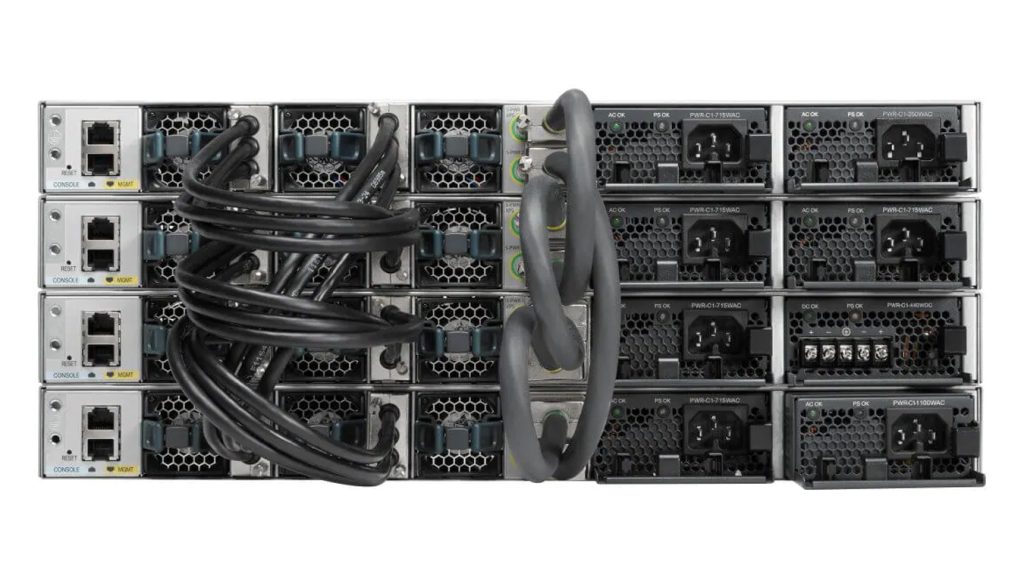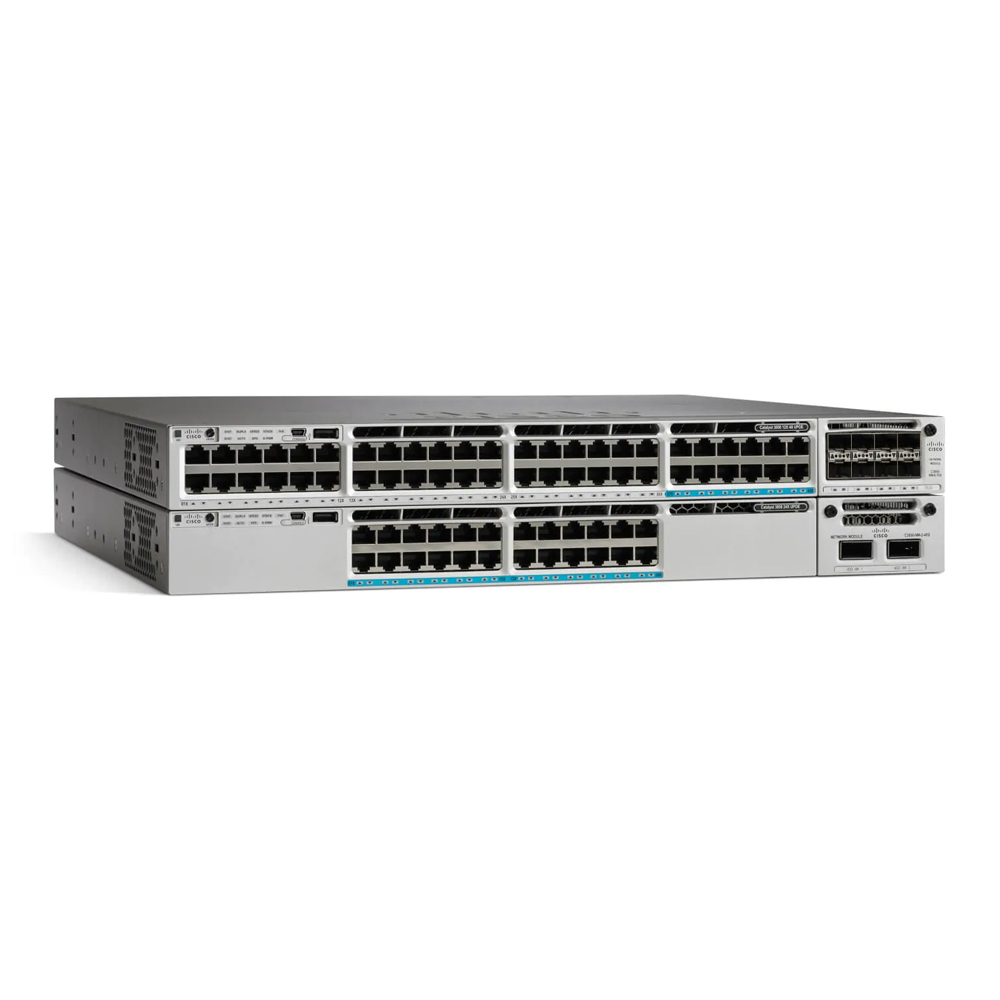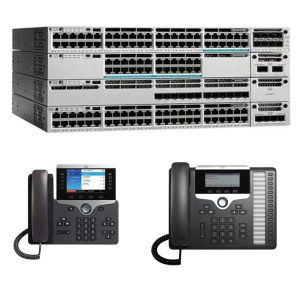Cisco Catalyst 3850 series switches are known for their scalability and reliability in enterprise networks. But what sets them apart from other switch models? The answer lies in their unique StackWise-480 technology.
What is StackWise-480 Technology?
StackWise-480 is a proprietary technology developed by Cisco. As a result, this allows for stacking of multiple CISCO Catalyst 3850 switches to create a single, virtual switch. This technology uses a high-speed 480 Gbps stack interconnect. It provides not only increased bandwidth, but also increased resiliency and redundancy.
How Does StackWise-480 Work for CISCO Catalyst 3850?

Each CISCO Catalyst 3850 switch in the stack is connected to every other switch via the StackWise-480 interconnect. This creates a single, virtual switch that is managed as a single entity. As a result, all switches in the stack share a single IP address, a single configuration file, and a single control plane.
What does StackWise-480 do exactly?
StackWise-480 technology works by allowing multiple CISCO Catalyst 3850 switches to be connected together in a single logical unit, creating a stack. Moreover, the switches in the stack are connected through a 48-Gbps stack interconnect. The stack interconnect provides high-speed communication between the switches.
In addition, each switch in the stack runs the same software image and is managed as a single device. As a result, this allows for increased bandwidth and redundancy, as well as the ability to manage the entire stack as a single device.
One switch in the stack is designated as the “Active” switch and acts as the master for the stack. The active switch is responsible for managing the stack and maintaining the configuration. Moreover, the remaining switches in the stack are designated as “Standby” switches, which are ready to take over as the active switch in case of failure.
What is Dual Active Supervisor Engine?
The StackWise-480 technology also includes dual active supervisor engines, which ensures that the stack will continue to function even if one of the switches fails. This helps to minimize downtime and ensure that the network remains available to users.
In terms of flexibility, the technology allows for any switch in the stack to be added or removed without disrupting the operation of the other switches. A benefit of this is, that it makes it easy to upgrade or expand the network as needed. Additionally, the StackWise-480 technology allows for the use of different models of 3850 switches in the same stack, providing even more flexibility.
Benefits of StackWise-480 Technology
Firstly, one of the major benefits of StackWise-480 technology is its ability to increase scalability. As a result, with the ability to stack multiple CISCO Catalyst 3850 switches, network administrators can easily add more ports and bandwidth to their network without the need for additional devices.
Secondly, another benefit is increased resiliency and redundancy. For instance, If one switch in the stack fails, the others will continue to operate, ensuring that the network remains up and running. And in the event of a failure, the switch can be quickly replaced without any disruption to the network.
How many CISCO Catalyst 3850 switches can be stacked?
One of the key benefits of StackWise-480 is its scalability. The technology allows for up to nine 3850 switches to be stacked together, providing a total of up to 432 10/100/1000 Ethernet ports. This makes the CISCO Catalyst 3850 an ideal solution for large enterprise networks and data centers that require a high level of scalability.
Stack of CISCO Catalyst 3850 Switches - up to 9 switches can be stacked

How StackWise-480 Compares to Other Stacking Technologies
Other stacking technologies on the market, such as Virtual Switching System (VSS) and Virtual Router Redundancy Protocol (VRRP), can also provide scalability and redundancy. However, StackWise-480 has a few key advantages over these technologies.
Firstly, StackWise-480 offers a higher stack interconnect bandwidth of 480 Gbps, compared to VSS and VRRP which typically offer around 40 Gbps. This means that StackWise-480 can handle more traffic and provide higher performance.
Secondly, StackWise-480 uses a single control plane, while VSS and VRRP use multiple control planes. This means that StackWise-480 is easier to manage and configure, as all switches in the stack are managed as a single entity.
One of the key benefits of StackWise-480 is its scalability. The technology allows for up to nine 3850 switches to be stacked together, providing a total of up to 432 10/100/1000 Ethernet ports. This makes the 3850 an ideal solution for large enterprise networks and data centers that require a high level of scalability, for instance.
Another benefit of StackWise-480 is its flexibility. The technology allows for any switch in the stack to be added or removed without disrupting the operation of the other switches. This makes it easy to upgrade or expand the network as needed. Additionally, the StackWise-480 technology allows for the use of different models of 3850 switches in the same stack, providing even more flexibility.
Stacking CISCO Catalyst 3850
Stacking Catalyst 3850 switches allows you to manage multiple switches as a single entity, simplifying the management of your network and increasing the availability and performance of your network. Here is a basic overview of how to stack Catalyst 3850 switches:
- Connect the switches: Physically connect the switches together using StackWise-480 stack cables. The cables connect to the StackWise-480 ports on the back of the switches.
- Configure the stack: Configure the stack by assigning a unique stack member number to each switch and setting the stack priority for each switch. This can be done using the “switch stack-member-number” and “switch stack-priority” commands.
- Create the stack: Create the stack by using the “switch stack-create” command. This will cause the switches to reboot and join the stack.
- Verify the stack: Verify that the stack has been created successfully by using the “show switch stack” command. This will display information about the stack, including the stack member numbers, stack priority, and stack status.
- Manage the stack: Once the stack is created, you can manage all the switches in the stack as a single entity. You can configure and monitor the stack using the same commands that you would use for a single switch. You can also use the Stack Master switch to manage the stack, it will act as a single point of management for the entire stack.
It is important to note that the switch should be running the same IOS version and same license level in order to stack them together. Moreover, the number of switches that can be stacked together is dependent on the model of the switch. The 3850 series supports up to 9 switches in a stack.
Conclusion
- Cisco’s StackWise-480 technology is a key component of the scalability and reliability of the Catalyst 3850 series switches. Its high-speed stack interconnect and single control plane make it a superior choice for enterprise networks looking to increase scalability and resiliency.
If you would like to read more about the CISCO Catalyst 3850 series please follow the below links.













